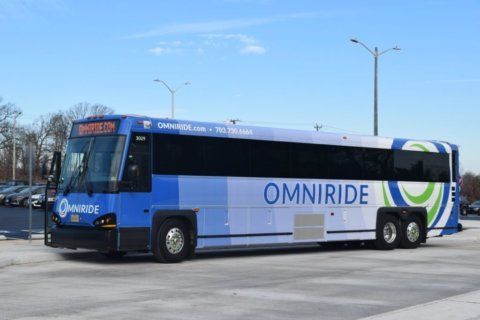This article was republished with permission from WTOP’s news partner InsideNoVa.com. Sign up for InsideNoVa.com’s free email subscription today.
This article was written by WTOP’s news partner InsideNoVa.com and republished with permission. Sign up for InsideNoVa.com’s free email subscription today.
Reading assessments for Prince William County’s youngest students show a dramatic increase in the number of students struggling to read at grade level from last year.
According to the state’s Phonological Awareness Literacy Screening (PALS), the number of Prince William elementary students not meeting the reading benchmark has risen by over 16% from last fall. In all but three of the 59 county elementary schools for which data was available, the percentage of students identified for PALS intervention is up from last year.
Part of the state’s Early Intervention Reading Initiative (EIRI), the screening is provided to school districts at no charge through a contract with the University of Virginia’s Curry School of Education Development. The biannual screening is designed to identify K-3 students in need of reading intervention services before grade promotion and will be given again during the spring semester.
Kindergarteners returned to in-person learning Nov. 10 and first graders returned at the start of December. The division is so far sticking with its phased return of older students in the new year.
Division staff declined to make anyone available for interview or answer questions about the results, citing the holiday week, and the three associate superintendents for the county’s elementary schools did not respond to requests for comment.
Diana Gulotta, the school division’s director of communications services, said schools will create a plan of interventions for students who don’t meet the benchmark.
“Schools receive additional funding from the EIRI grant to implement interventions which could include small group tutoring by a reading teacher or paraprofessional under the supervision of a reading teacher,” she said in an email. “It may also include using a computer-based reading program that adapts to the student’s skill level and growth pattern.”
The data was made available to school board members in advance of their joint meeting with the Prince William Board of County Supervisors on Dec. 8, but the results were not discussed during the meeting. At that joint meeting, three Republican Board of County Supervisors members walked out in protest over implicit bias training presented by division staff at the request of Woodbridge School Board Member Loree Williams.
School Board Chair Babur Lateef, who has long pushed for a faster return to in-person learning despite rising cases of COVID-19, called the results “extremely concerning.” Other school board members either couldn’t be reached for comment or said they hadn’t been able to fully review the data yet.
“There is no doubt that remote learning is not adequate to teach reading to the students. These results validate what the experts have always believed and that is pre-K through 3 will not do well with remote learning,” Lateef said. “Frankly, we should’ve had pre-k through 3 in much sooner. The data in the PALS testing is crystal clear. Remote learning is not working for our students well enough.”
There were three elementary schools in the report for which full data was not available, but West Gate Elementary School outside Manassas showed a 53.3% increase in the number of students identified for intervention, the largest in the county. Eight others showed increases of more than 30%: Marumsco Hills, Featherstone, Vaughan, Kilby, Victory, Sinclair, Enterprise and Belmont. Tyler Elementary School in Gainesville posted the biggest decline in struggling students, with 7.7% fewer students being identified for intervention. Minnieville and Marshall Elementary Schools also had declines.
In 15 elementary schools, half or more of the students were identified for intervention.
Academic indicators from other Northern Virginia school districts have shown significant struggles during largely remote learning this fall as well. A report from Fairfax County Public Schools at the end of November showed a significant drop in grades this year. Meanwhile, PALS data for Arlington County Public Schools showed drops in reading proficiency for every elementary school grade, and particularly among Black and Hispanic students as well as English-language learners. Full data by race and ethnicity is not yet available for Prince William schools, the second-largest school district in the commonwealth and 35th largest in the country.
Based on the Centers for Disease Control’s school reopening dashboard, which largely relies on COVID case incidence over the last 14 days, Prince William County remains in the highest-risk category.
Gov. Ralph Northam has imposed some new restrictions during the winter surge in cases, but many activities like indoor dining are still allowed, just at slightly diminished capacity.
As of Wednesday, the county’s seven-day test positivity rate was 16.4%, well above the target numbers set out by the CDC and Virginia Department of Health. According to the Virginia Hospital and Healthcare Association, a record 2,586 COVID-19 patients are currently being treated in hospitals across the state.
Lateef said that schools haven’t been a source of spread for COVID.
“[The schools] aren’t really the problem, it’s the bars and restaurants that are the problem,” he said.







